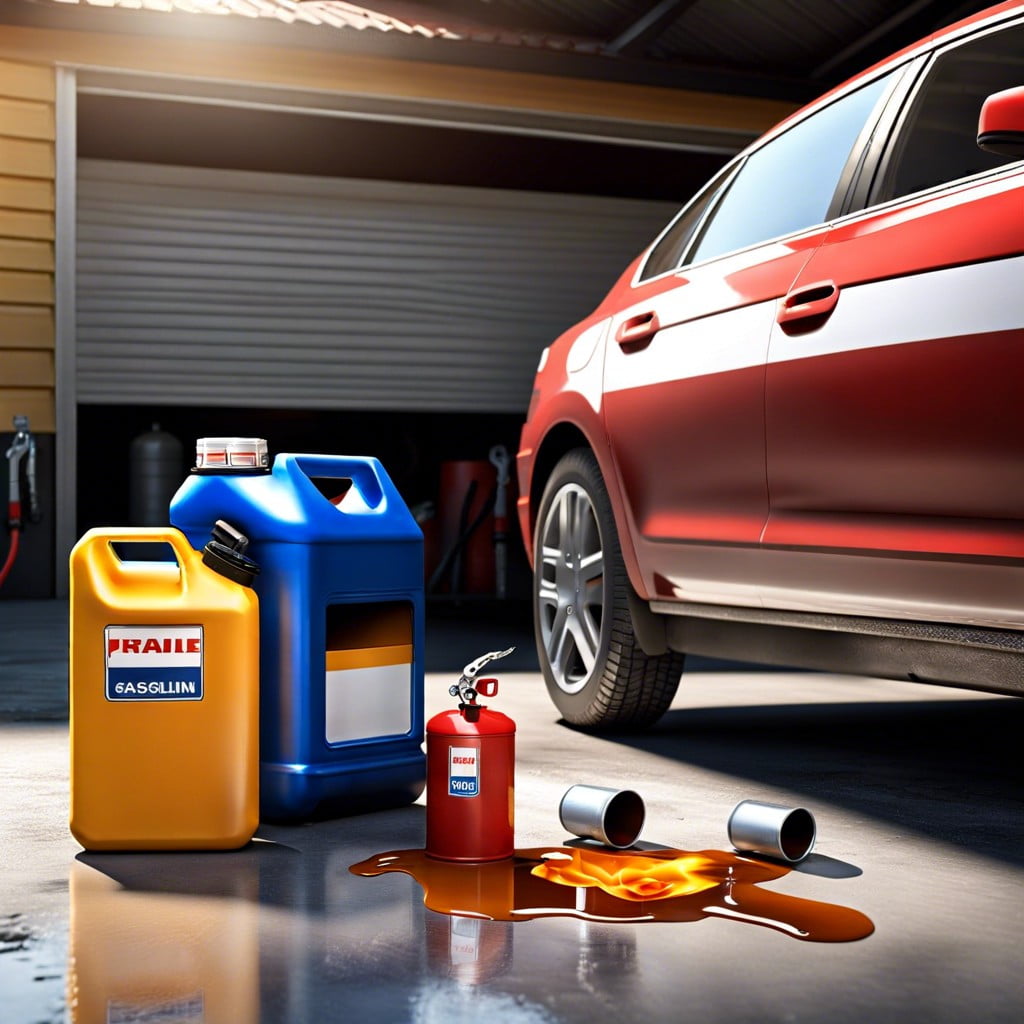If your garage smells like gas, this article will guide you through identifying the source and provide solutions to address it safely and effectively.
Key takeaways:
- Identify the source of the gas smell in your garage.
- Inspect vehicles for fuel leaks and consider professional help.
- Check gas containers for proper sealing and storage practices.
- Store gasoline at a safe distance from ignition sources.
- Improve ventilation in your garage to clear gas odors.
Identifying the Source of the Gasoline Smell

Begin by sniffing around the garage to pinpoint where the smell is strongest. Check near your car, especially around the fuel tank and fuel lines, which could be the culprits if they’re loose or damaged. Also, look at the floor for any spots that could indicate dripping gasoline.
Don’t forget to inspect any equipment that uses gasoline, like lawnmowers or snow blowers. A loose cap or a crack in the fuel system can easily lead to gas vapors escaping.
Remember, gasoline vapors are heavier than air and tend to settle low. So, lower your sniff-check to the ground level, where you might notice the odor more intensely.
Lastly, if your garage is connected to another part of your home or another garage, consider if the smell could be wafting in from a nearby space, complicating your search. Sometimes, the nose knows best, so trust your senses to lead you to the problem!
Inspecting Vehicles for Fuel Leaks
Begin by checking the area under and around your vehicle for any signs of fresh petrol stains. These usually appear darker on concrete and might give off a strong odor. If you spot these telltale signs, inspect the fuel lines and the tank’s integrity for any wear and tear or damage.
A loose or deteriorated seal on your fuel cap can also be a culprit. Confirm that it tightens properly and replace it if necessary.
For a thorough check, especially if nothing seems amiss by mere visual inspection, consider engaging a professional mechanic. They can perform a pressure test to detect hidden leaks accurately, saving you time and ensuring safety in your garage.
Lastly, remember that prevention is better than cure. Regular maintenance checks on your vehicle can prevent these issues from developing.
Examining Gas Containers for Proper Sealing
Check each gas container in your garage for any signs of damage or wear. Rubber seals can degrade over time, which might compromise the container’s ability to hold gasoline securely. If you notice any cracks or brittleness, it’s time to replace the container. Always opt for containers with a tight-fitting cap to prevent vapors from escaping. Additionally, ensure the area where you store these containers is dry and away from any source of heat to avoid evaporation that could lead to a build-up of fumes. Regularly wipe down the containers to remove any residual gasoline that might have spilled during use.
Safe Storage Practices for Gasoline in Garages
Always store gasoline in containers approved by the Department of Transportation or a similar regulatory body. These containers are specifically designed to prevent leaks and limit vapor emissions, crucial for minimizing fire risks.
Keep these containers tightly closed and away from direct sunlight or any heat source such as a space heater or furnace. Elevated temperatures can increase pressure inside the container, risking a leak or burst.
Position gasoline storage at least 50 feet away from any ignition sources. This distance helps to prevent any accidental ignition from sparks or electrical equipment commonly found in garages.
Label all gasoline containers clearly. This simple step aids in quick identification, reducing the chance of misuse or accidental spillage.
Regularly check containers for cracks, leaks, or other signs of wear. Replace faulty containers immediately to maintain a safe environment in your garage.
Lastly, limit the amount of gasoline stored in your garage. Store only what you need for your immediate requirements. This minimizes risk and ensures safer handling practices.
Ventilation Solutions for Clearing Gas Odors
Improving air circulation in your garage is key to eliminating persistent gas smells. Start by installing exhaust fans near the ceiling, as they efficiently pull fumes out of the space. Also, keep windows and doors open when possible to allow fresh air to flow through. To further enhance air movement, consider using standing or box fans strategically placed to direct vapors towards openings. For a long-term solution, think about integrating a ventilation system specifically designed for garages, ensuring consistent air exchange even when the garage is closed.